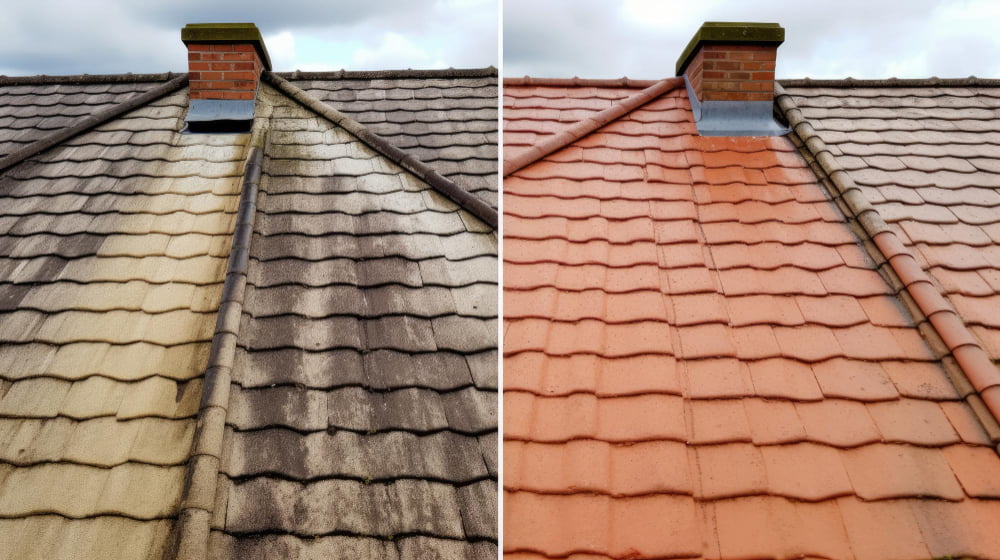Last updated on
When it comes to longevity and practicality, metal roofing stands out among its counterparts. Known for its exceptional durability and energy efficiency, a metal roof can be a wise and long-lasting investment for any homeowner. With its ability to withstand harsh weather conditions, such as heavy rain, strong winds, and even hailstorms, a metal roof provides superior protection for your home.
Apart from its durability, metal roofing also offers excellent energy efficiency. Its reflective properties help to reduce heat absorption, keeping your home cooler in the summer and potentially lowering your energy bills. Additionally, metal roofs are often made from recycled materials, making them an eco-friendly choice.
However, to ensure your metal roof performs at its best throughout the years, proper maintenance is crucial. Regular inspections and cleaning can help identify and address any issues before they become major problems. It’s also important to keep the gutters clear and free from debris to prevent water accumulation and potential damage to the roof.
Regular Inspection and Cleaning

Regular inspection is the linchpin of proactive roof maintenance. The team behind Top Notch Metal Roofing highly recommends inspecting your metal roof at least twice a year, ideally in the spring and fall seasons, as well as after any significant weather events such as storms or hail.
During the inspection, carefully examine the entire roof surface for signs of damage, including scratches, dents, or areas where the finish may be compromised. Pay close attention to seams, flashing, and any protrusions such as vents or chimneys, as these areas are more prone to leaks.
In addition to checking for visible damage, it is important to keep the surface of the metal roof clear from debris. Leaves, branches, and other organic matter can accumulate and retain moisture, which can lead to the corrosion of metal roofing materials over time.
To prevent this, use a long-handled broom or a leaf blower to regularly remove debris from the roof. For areas that are difficult to access safely, it may be wise to consider hiring a professional roof cleaner who has the expertise and equipment to clean those hard-to-reach spots effectively.
Control Rust and Corrosion
One of the primary adversaries that poses a threat to the longevity of a metal roof is corrosion. To effectively combat this issue, it is crucial to promptly address any scratches or exposed metal resulting from installation or weather damage.
This can be achieved by promptly covering these areas with an appropriate touch-up coating. Additionally, if you happen to notice the formation of rust, it is imperative to take immediate action.
Start by thoroughly cleaning the affected area using a wire brush, followed by the application of a primer and a matching topcoat. By consistently prioritizing the prevention and treatment of rust, you can significantly extend the lifespan of your valuable metal roof.
Proper Drainage

Water accumulation can be detrimental to metal roofing. Therefore, maintaining proper drainage is essential. Keep gutters and downspouts clear of obstructions to allow precipitation to flow freely away from the roof. This not only prevents water damage but also reduces the risk of ice dam formation in colder climates. If you notice any ponding water on the roof surface, investigate and rectify the cause as soon as possible to avoid long-term issues.
Avoid Walking on the Roof
While metal roofs are designed to withstand the elements, they can be dented or damaged under pressure. Walking on the roof should be minimized and, if necessary, done so with caution. If you must access the roof for maintenance, use proper safety equipment and walk gently, preferably along the rafters or supports. This approach minimizes the chances of denting the panels or compromising the integrity of the roof.
Replacement of Sealants and Fasteners
Over time, the sealants used in metal roofing can deteriorate. Check the sealants around vents, skylights, and flashing once a year to ensure they are holding up. If you notice any cracked, peeling, or worn-out sealants, make sure to hire reputable contractors to replace them as needed. Additionally, the fasteners that hold your metal roof panels in place may also become loose or corroded over time. Re-tighten or replace them as required to ensure your roofing remains secure.
Trim Overhanging Tree Branches
Surrounding trees can pose risks to your metal roof due to falling branches or piled-up debris. To mitigate these risks, trim back overhanging branches regularly. Keeping branches away from your roof not only prevents physical damage but also discourages the accumulation of leaves and organic materials which can foster moisture and corrosion.
Maintaining a metal roof may seem burdensome, but the benefits of these efforts are clear and long-lasting. By conducting regular inspections, addressing rust, ensuring efficient drainage, avoiding unnecessary pressure, replacing sealants and fasteners, and managing overhanging foliage, you’ll safeguard your investment and enjoy a resilient, enduring metal roof for many years.
Implement these six maintenance tips diligently, and your metal roof will continue to shelter and add aesthetic value to your home, proving its worth many times over.
Recap:



